This Commodity Bull Market Will Run Into 2024
Robert Ross|December 11, 2023
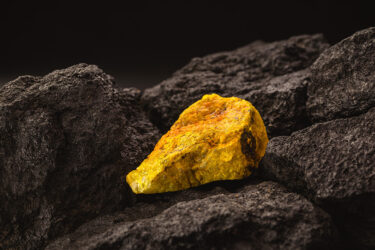
The market in 2023 looks a lot different from the market in 2022.
A year ago, one of the only asset classes working was commodities. Whether it was oil, wheat or steel, anything you could drop on your foot seemed to be rallying.
And for good reason. The U.S. was experiencing its highest inflation in decades, the Russian invasion of Ukraine had thrown global oil markets into disarray, and the U.S. dollar was rapidly rising. All of these things lit a fire under commodities.
But as the saying goes, “The cure for high prices… is high prices.”
Elevated commodity prices cause producers to increase output to take advantage of high prices, while consumers spend less. This leads to an eventual equilibrium in supply and demand, which is why most commodity charts over the last two years have looked like this:
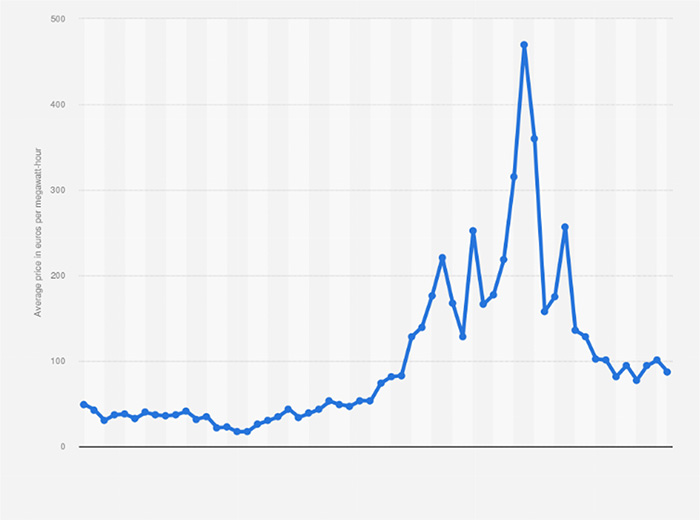
But there’s one commodity we discussed a few months ago that continues to buck this trend.
And if my analysis is correct, it could rise much higher in the coming years.
Uranium Is Back on the Menu
I first told you about investing in uranium back in September.
I listed Cameco (CCJ) among a trio of high-risk, high-reward plays worthy of your attention. Since I mentioned the stock here in the Digest, shares have gone up as much as 19%.
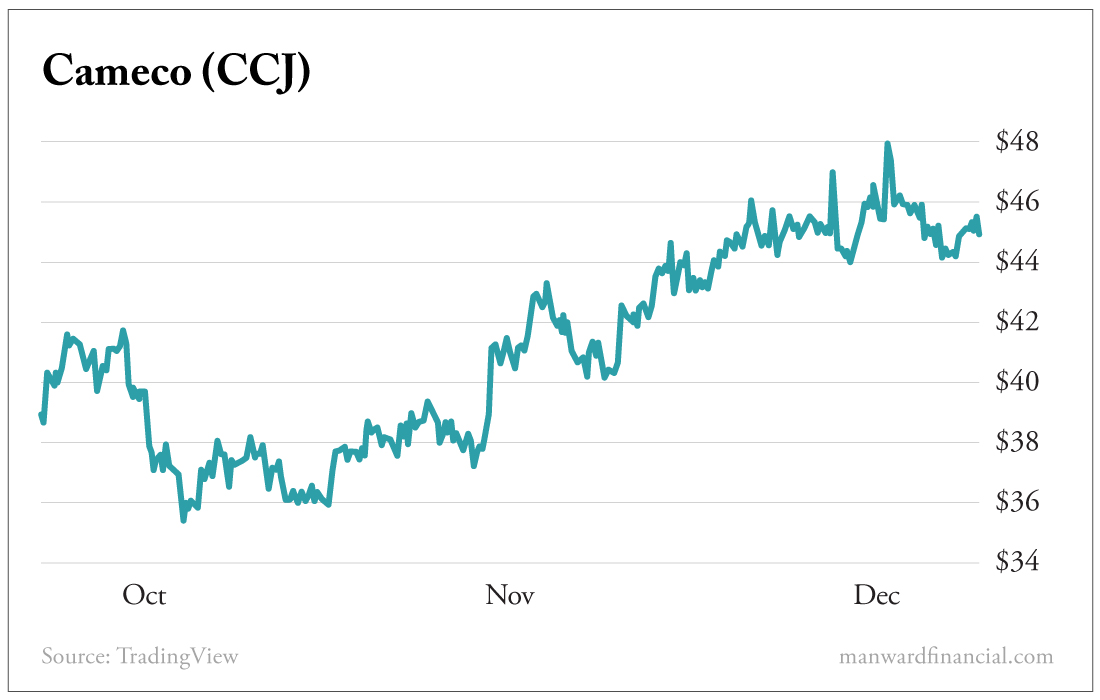
Uranium has long been on my investing radar.
Back in 2012, I prepared a report on a company called Uranium One for Grant Williams (co-founder of Real Vision), my boss at the time.
This was a year after the Fukushima nuclear disaster in Japan. The event – in which a massive earthquake caused three nuclear plants to melt down – renewed the belief that nuclear technology is unsafe.
And it cratered uranium prices.
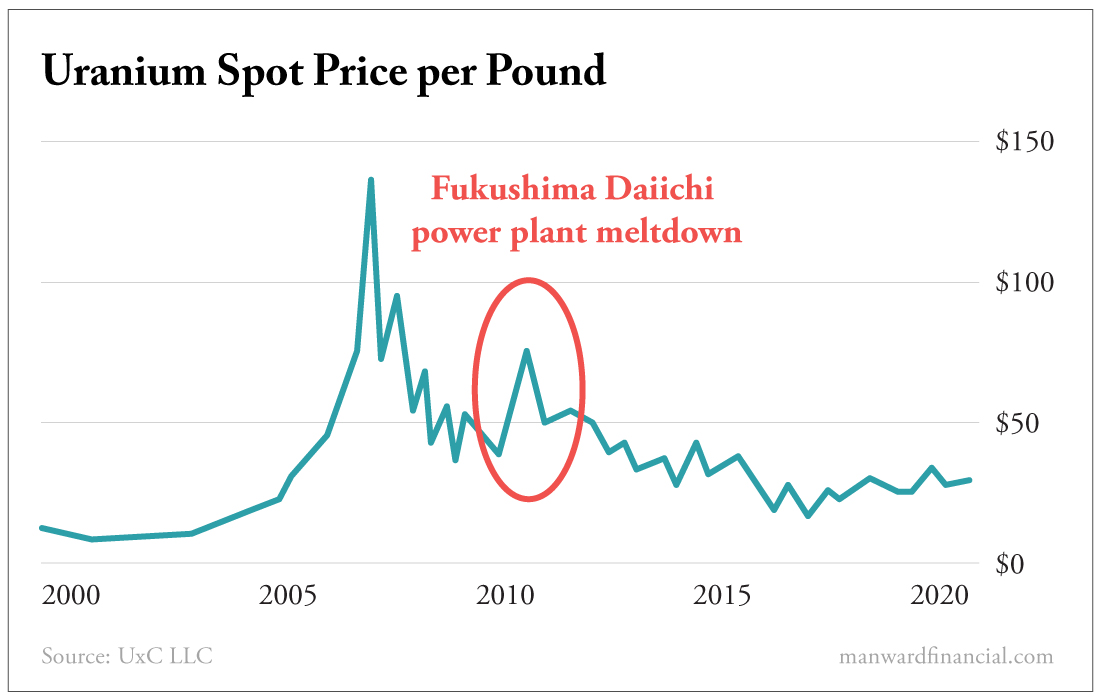
But nuclear energy has always been unfairly maligned by critics.
My research into the uranium market showed that the world – and the U.S. in particular – needed more nuclear power, not less.
From a fundamental standpoint, uranium seemed far and away the best energy-generation source, in terms of both energy output and environmental impact.
You see, nuclear energy generates electricity without emitting greenhouse gases or air pollutants. Nuclear power plants also produce minimal carbon dioxide (CO2) emissions during their operational phase.
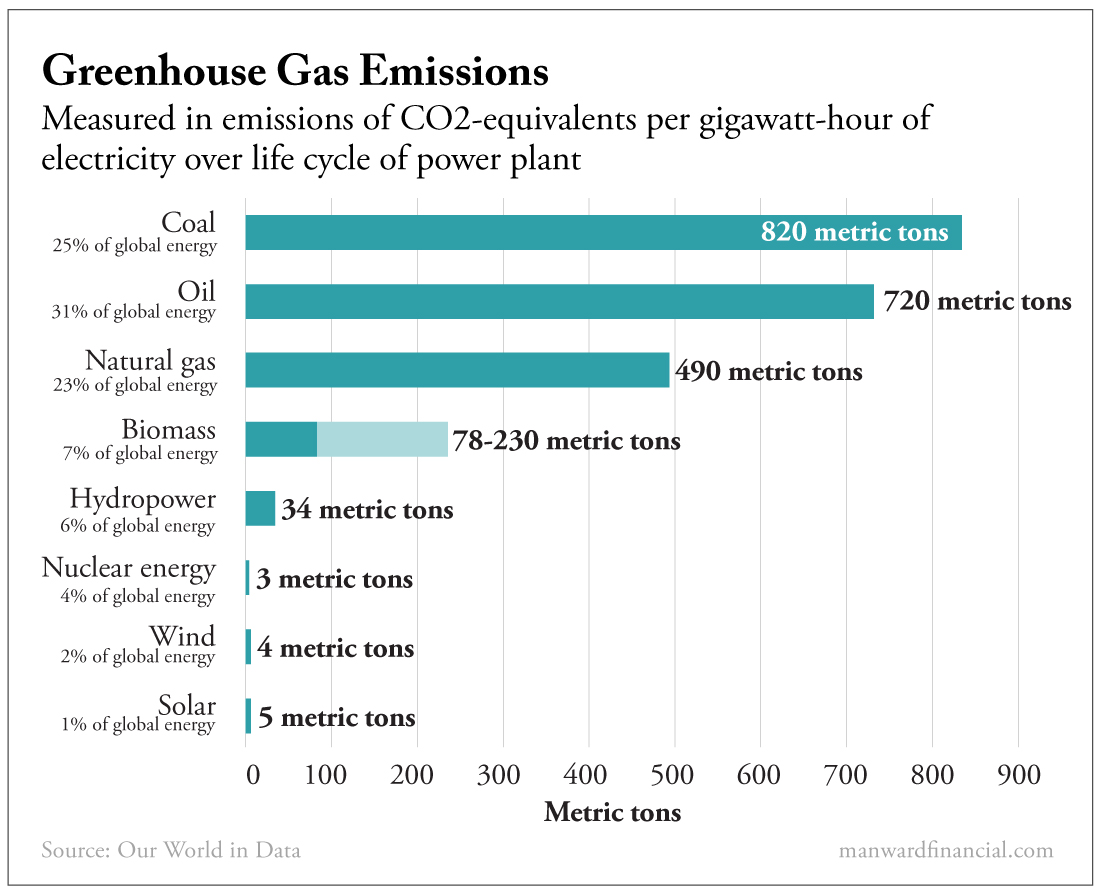
Another benefit of nuclear is that it has an incredibly high energy density. That means a small amount of nuclear fuel can produce a significant amount of energy.
This is in contrast with renewable sources like wind and solar, which depend on weather conditions and require large land areas to generate comparable energy outputs, as shown in this infographic from the U.S. Energy Information Administration:
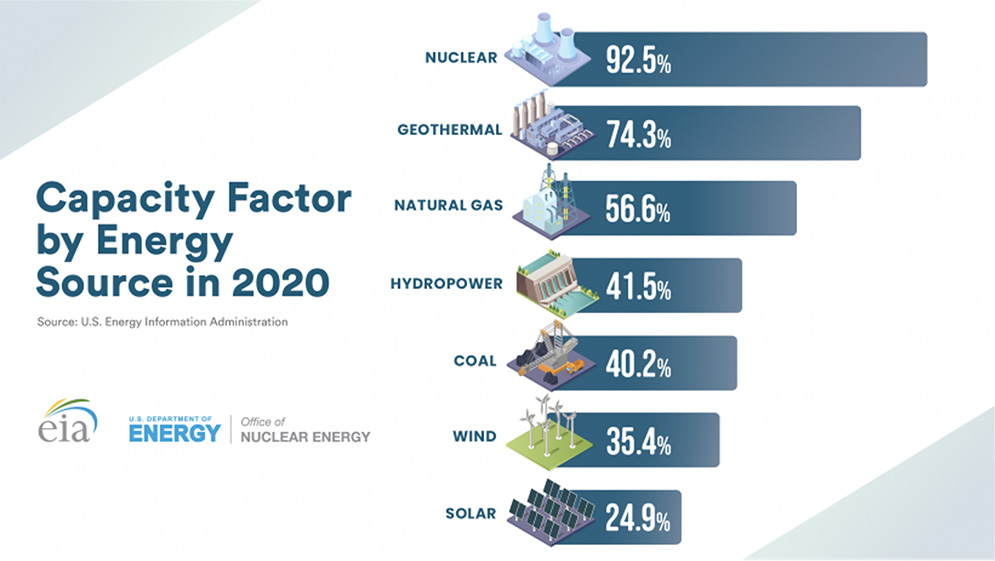
Unfortunately, the trade I identified for Grant didn’t work. For years, shares of uranium companies like Cameco have gone nowhere.
But luckily for us, that is starting to change…
Uranium Is Catching a Bid
Uranium prices are currently sitting at a 12-year high…

And there are a few reasons for the recent resurgence.
The first is related to my original thesis: Nuclear energy is cheap and clean.
Spurred by skyrocketing gas prices in the wake of Russia’s invasion of Ukraine, governments from Washington to Seoul and Paris are seeking energy independence. And they’re aiming to achieve it by extending the life spans of their existing nuclear reactors.
This is a key reason the International Energy Agency said that global nuclear generation capacity needs to double by 2050. That would entail producing another 30 gigawatts of nuclear energy per year. Considering that each plant generates roughly 1 gigawatt per year, that means the world would need to build 30 plants per year to reach this goal.
Second, Cameco – the world’s largest uranium miner – recently disclosed that it will produce less uranium this year than expected. This weakens the supply side of the equation, which – as demand rises – should be favorable for prices.
Lastly, as we talked about a few weeks ago, a “weaker” U.S. dollar is good for commodities like uranium.
And I expect the dollar to get even weaker in 2023. The Federal Reserve is near the end of its interest rate hiking cycle… with the market now pricing in 100 basis points’ worth of cuts in 2024.
All of these factors have pushed uranium prices higher in 2023.
A Few Ways to Play This Trend
You already know I’m a fan of Cameco. Two other plays you could consider on the mining side are Kazatomprom (NATKY) and Energy Fuels (UUUU).
If you’re looking for a diversified approach, you could buy a uranium ETF like the Global X Uranium ETF (URA), which tracks the Solactive Global Uranium & Nuclear Components Total Return Index. URA includes companies engaged in uranium mining and exploration, plus companies engaged in the production of nuclear components.
And while I wouldn’t recommend storing uranium in your house (it’s a bit radioactive), you can always invest in the Sprott Physical Uranium Trust (SRUUF), which allows investors to indirectly own and store physical uranium.
Whichever option you choose, I’d make sure not to miss out on this under-the-radar bull run.
Stay safe out there,
Robert



